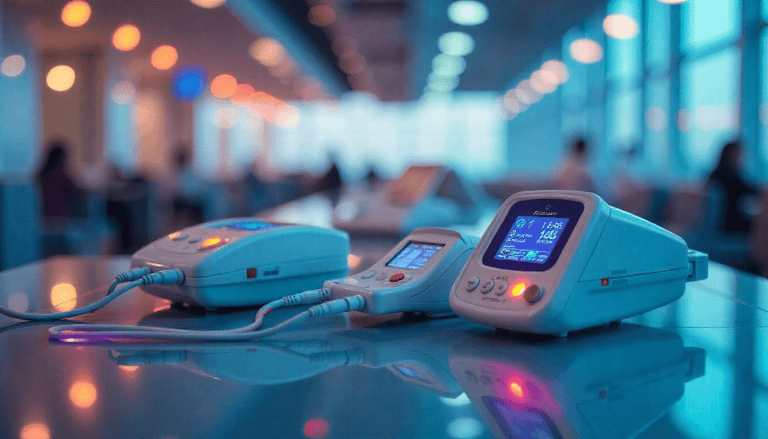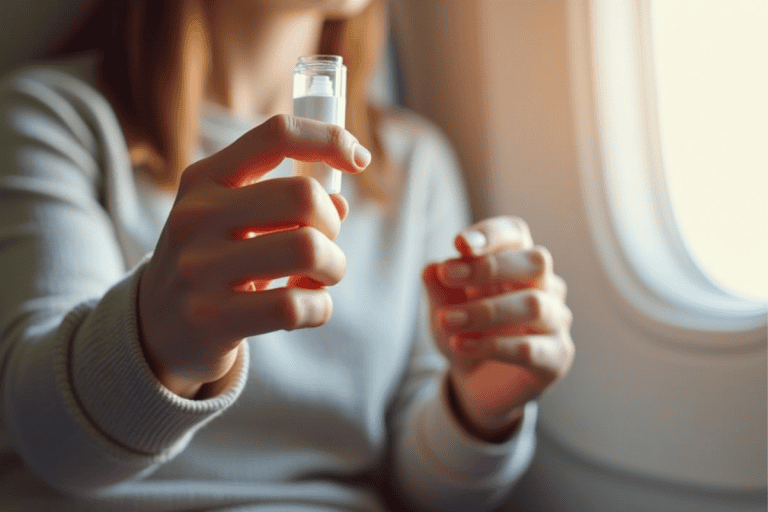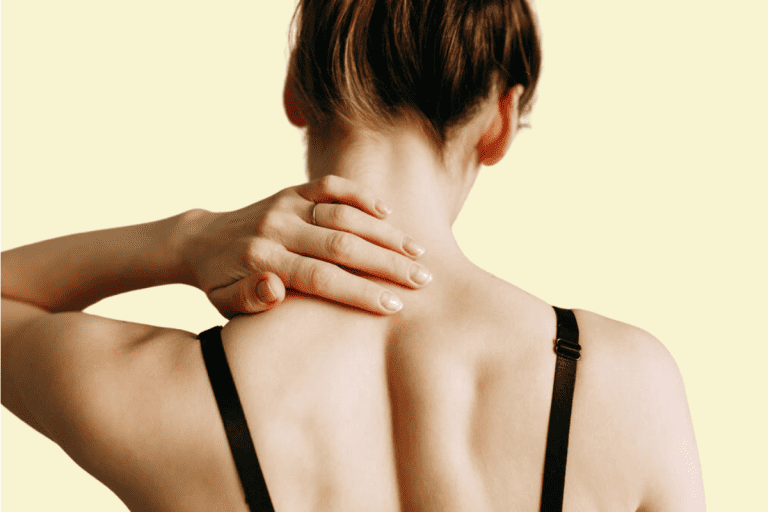TSA Rules for Flying with Power Banks and Portable Chargers

Whether you’re heading out on a weekend getaway or a long international flight, a power bank has become an essential travel companion. Keeping your phone, laptop, or life-saving medical devices charged can give you peace of mind while you’re in the air. But with TSA rules, airline restrictions, and customs regulations varying from country to country, knowing what’s allowed—and what’s not—can get confusing fast.
This guide will help you understand the current rules, including TSA guidelines, watt-hour limits, and airline restrictions. If you use a CPAP machine, portable oxygen concentrator or insulin pump, or other essential medical device, it’s especially important to know how to travel with the power sources you need. We’ll cover what’s allowed, how to pack your power banks properly, and what to expect at security.
And if you rely on medical equipment when flying, don’t miss our Flying with Medical Devices guide. It’s a comprehensive resource that covers everything you need to know about bringing medical devices—and their power supplies—onboard.
This guide will give you the confidence to pack your power banks and portable chargers the right way, so you can focus on enjoying your flight.
1. Can You Fly with a Power Bank?
Yes, you can bring a power bank on a plane, but there are important restrictions to follow. Power banks contain lithium-ion or lithium-polymer batteries, which aviation authorities classify as hazardous materials due to their potential fire risk. That’s why airlines, the TSA, and other international agencies have specific rules about the type, size, and placement of these devices.
The key thing to remember is this: power banks are only allowed in your carry-on bag. They are never permitted in checked luggage. If a power bank is found in checked baggage, it can lead to delays or removal of your suitcase. Some airlines may even deny boarding if rules aren’t followed.
Be sure you read Accidentally Left Battery in Checked Luggage if you mess up, for the steps to follow.
2. Battery Type and Where to Pack
2.1 Lithium-Ion and Lithium-Polymer Batteries Only
Only lithium-ion and lithium-polymer batteries are approved for use in power banks and portable chargers on airplanes.
2.2 Carry-On Luggage Requirement
Regardless of battery type, all power banks must be placed in your carry-on luggage. You cannot pack them in your checked bag. This is an international safety standard. The reasoning is simple: If a lithium battery overheats or catches fire, it’s far easier to detect and address in the cabin than in the cargo hold.
2.3 How to Pack Your Power Bank Safely
Keep your portable charger in a separate compartment of your bag or in a padded case. It’s also a good idea to cover any exposed terminals with electrical tape or place the power bank in a battery pouch, especially if you’re carrying more than one.
At security, TSA officers may ask you to remove the power bank from your carry-on and place it in a separate bin for screening. Keeping it accessible will speed up the process.
3. Watt-Hour (Wh) Limits for Power Banks
3.1 How the Limits Work
The most important rule about flying with power banks is the watt-hour limit. TSA and airlines regulate lithium batteries based on their capacity, measured in watt-hours (Wh).
3.2 Under 100Wh
These power banks are permitted on flights without restrictions, and you don’t need airline approval. Most portable chargers for smartphones, tablets, and many medical devices fall into this category.
3.3 101Wh to 160Wh
These are allowed on planes, but you’ll need prior approval from the airline. Some airlines may limit this category to power banks that are used for medical devices only. Always check with your airline at least 48 hours before your flight.

3.4 Over 160Wh
These are prohibited on commercial flights, both in carry-on and checked baggage. If your device needs this much power, you’ll need to bring multiple smaller batteries that comply with airline rules.
3.5 How to Calculate Watt-Hours
If you’re unsure of your power bank’s watt-hour rating, you can calculate it using a simple formula:
Watt-hours (Wh) = Voltage (V) × Ampere-hours (Ah)
Many travelers focus on milliamp hours (mAh) when choosing a portable charger. For example, a 30,000mAh power bank sounds like a high-capacity option, but whether it’s allowed on a plane depends on the voltage. Most 30,000mAh power banks fall within the 100Wh limit if they operate at standard voltage (3.7V), but you should always check to be sure.
4. TSA and Airline Rules for Medical Devices Powered by Power Banks
4.1 TSA Rules
The TSA follows FAA regulations for lithium-ion batteries. Power banks with a capacity up to 100Wh are generally allowed in carry-on bags without restrictions. If your power bank is over 100Wh but no more than 160Wh, you must get airline approval before your flight. Power banks larger than 160Wh are not permitted on commercial flights.
4.2 Airline Policies
Some airlines may allow power banks between 101Wh and 160Wh, particularly if they are used to power medical devices. However, you typically need to request approval in advance, and policies can vary depending on the airline and flight route. It’s always best to contact your airline at least 48 hours before departure to confirm their specific rules.
KEEN TIP: Before purchasing a power bank for air travel, check your device’s voltage and watt-hour requirements. It’s important to choose a power bank that not only works with your medical device but also meets TSA and airline capacity limits. You can usually find this information on the device label or in the user manual.
KEEN TIP: If you’re bringing a power bank over 100Wh, always notify your airline in advance. Let them know the power bank is for a medical device, and carry any supporting documentation they may request. Some airlines may ask for a letter from your doctor (check out our free medical letter template!) explaining the medical necessity of the device. While not required by TSA, it can smooth the process with international customs or airline staff. This can help prevent delays at security checkpoints and ensure a smoother boarding process.
5. Customs Rules for Power Banks on International Flights
5.1 Do Customs Authorities Regulate Power Banks?

Yes. While the TSA and airlines set rules about bringing power banks on planes, customs agencies in other countries can impose their own regulations. These may include:
- Limits on the number of batteries you can bring (common in China and some Middle Eastern countries).
- Requirements to declare your power banks at customs checkpoints.
- Restrictions on battery size, even if the airline permitted them on board.
5.2 Examples of International Customs Restrictions
- China: Passengers are limited to two power banks, each under 100Wh. You must declare them at security checkpoints. Larger or undeclared power banks can be confiscated.
- European Union: Follows similar watt-hour limits as the TSA but may require additional screening at customs in some countries.
- United Arab Emirates, Qatar, Saudi Arabia: Some airlines and airports may require travelers to declare power banks, especially if they exceed certain watt-hour ratings or are being used for medical devices.
5.3 What You Should Do Before International Travel
- Check the customs rules of your destination country and any countries where you have layovers.
- Contact your airline for battery approval if you’re bringing power banks between 101Wh and 160Wh.
- If you’re traveling with medical devices, bring documentation (doctor’s note) explaining your need for extra power banks.
- Declare your power banks if required. Being upfront at customs can prevent delays or confiscation.
5.4 Can Customs Confiscate Power Banks?
Yes, if you violate a country’s customs regulations, they can confiscate your power banks. In some cases, failure to declare them may result in fines or delays. Having the correct documentation and following local rules minimizes this risk.
For more information on what to do if customs confiscates your items, see our section in the Flying with Medical Devices guide.
6. Selecting the Right Power Bank for Your Medical Device
Not all power banks are suitable for powering medical devices during air travel. It’s important to find one that meets your device’s power requirements and complies with TSA and airline regulations. You’ll also want to confirm your chosen power bank is approved for use with your specific equipment by the manufacturer.
6.1 CPAP Machines
Most CPAP machines require 12-24V DC power and won’t run directly from USB power banks. Many travelers use power banks with DC output designed specifically for CPAP devices.
For example, some travelers find a 100Wh power bank can provide approximately 6-8 hours of operation without humidification, depending on the machine and settings.
Check out our article on How to Pack your CPAP for more helpful tips.
6.2 Portable Oxygen Concentrators (POCs)
Portable oxygen concentrators often require higher wattage than CPAP machines. Some batteries used with POCs may be larger, and in many cases, travelers seek 160Wh batteries, which usually require airline approval.
Always check with your POC’s manufacturer for approved batteries, and verify your airline’s battery size limits before you fly.
For more information on traveling with oxygen concentrators, visit Can You Fly with an Oxygen Concentrator?
6.3 Insulin Pumps and Nebulizers
These devices generally have lower power needs and are often compatible with standard USB power banks providing 5V output. Many travelers use power banks in the 10,000-20,000mAh range to keep their devices charged during flights.

Always confirm your device’s power needs with the manufacturer and bring backup batteries in case of delays or extended travel time.
Pro Tip: If your medical device requires more power than what’s allowed in a single battery (for example, over 100Wh), consider carrying two smaller batteries instead. Most airlines allow travelers to bring multiple batteries under 100Wh without additional approval.
KEEN TIP: Be sure to verify quantity limits with your airline, especially for international flights.
7. Frequently Asked Questions
7.1 Do I need to declare my power bank at customs?
It depends on the country. In China and some Middle Eastern countries, you are required to declare your power banks, even if they are under 100Wh. Always check customs regulations before you travel internationally.
7.2 Can I pack my power bank in checked luggage?
No. Power banks are never allowed in checked luggage. They must be carried in your carry-on bag at all times.
7.3 Do I need a doctor’s note for my power bank if it’s for a medical device?
While TSA does not require a doctor’s note, some airlines and international customs agencies may ask for one. It’s a good idea to bring documentation if you’re traveling internationally or carrying multiple batteries.
7.4 Can I use my power bank during the flight?
Yes, you can use your power bank during the flight. Some airlines may restrict the use of high-powered devices during takeoff and landing, so check with the flight crew if you’re unsure.
7.5 What happens if TSA flags my power bank at security?
If TSA needs to inspect your power bank, they’ll check the watt-hour rating and may ask questions about its use. Keep the power bank’s label visible and be ready to explain its purpose, especially if it’s for a medical device.
7.6 Do different countries have different power bank rules?
Yes. Countries like China have stricter rules—allowing only two power banks under 100Wh each. The European Union typically follows similar rules to TSA but may require additional screening. Always check the regulations for your destination before you fly.
8. Wrap Up
Understanding the rules about flying with a power bank makes your trip smoother and ensures your important devices stay powered when you need them most.
These are the key takeaway points:
- Power banks under 100Wh are the easiest to fly with—no airline approval needed.
- Batteries between 101Wh and 160Wh require advance permission.
- Anything over 160Wh is not allowed on commercial flights.
- Keep all power banks in your carry-on bag, never in checked luggage.
- If you use a medical device, check your power bank’s compatibility and consider carrying multiple batteries for longer flights.
- When traveling internationally, confirm customs and airline rules before you go.
Follow these guidelines, so you can enjoy your trip with peace of mind and stay connected and powered up wherever you fly.






